
Art and Culture
Take advantage of your holidays in this 3-star hotel to uncover the treasures of Rimini: Hotel Trafalgar is located just a short distance from the city centre and all its marvels.
One of his most famous films, Amarcord, won the Oscar for best foreign film. Fellini was nominated 12 times for the Oscar and in 1993 he was awarded the Oscar for Lifetime Achievement.
In addition to being recorded, he was also a screenwriter, writer and cartoonist. For the 100 years since his birth Rimini has dedicated an extraordinary exhibition to him with material from his films and his life. What was exhibited in the exhibition "Fellini 100. Immortal genius", can be seen on YOUTUBE in a 5-minute guided tour

Some excavations from the Roman era have preserved all of their charm: one of these is the Domus del Chirurgo, a splendid archaeological excavation located in Piazza Ferrari that provides an opportunity to admire the remains of a house dating back to the second century AD and which belonged, interestingly, to a doctor. A great number of surgical instruments have been found inside the Domus. Additionally, the excavations have also brought to light mosaics and polychrome frescoes that are truly unique.
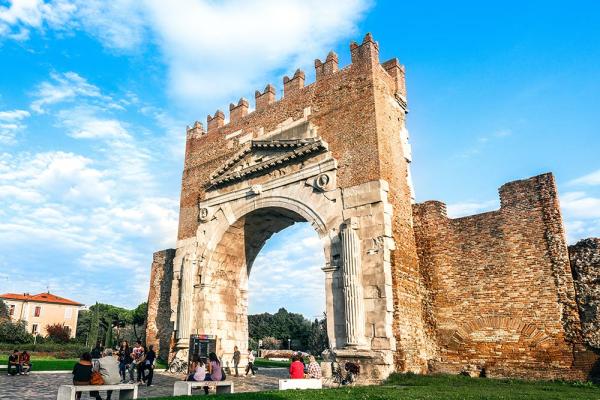
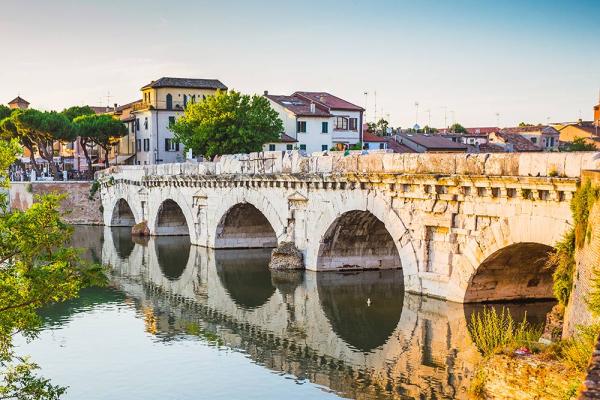
The Bridge of Augustus and Tiberius, better known as the Tiberius Bridge, was also built of Istrian stone. Consisting of five round arches, it is still part of the city's road network. It was completed over a period of seven years. The construction work started in 14 AD under the rule of Augustus and ended in 21 AD under that of Tiberius.

To fully breathe the air of Rimini and immerse yourself in its magical atmosphere you must go to the city centre, where a visit to the Old Fish Market is a must. The distinctive arched gallery, once home to the fish market, is now the meeting place for many young people at any time of day or night. Here restaurants, pubs and wineries that are all around offer the chance to have some fun in good company.
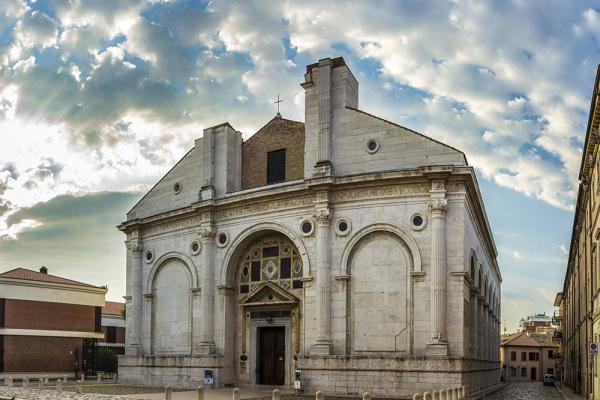
The Malatesta Temple, characterized by an unmistakable Renaissance style embellished with Gothic elements, was designed by Leon Battista Alberti and offers its visitors frescoes and sculptures by internationally renowned artists such as Giotto, Giorgio Vasari, Agostino di Duccio and Piero della Francesca. Inside the Tesoro della Cattedrale museum, located next to the Temple, it is possible to admire numerous finds of various kinds, such as illuminated manuscript, chalices and sacred ornaments.
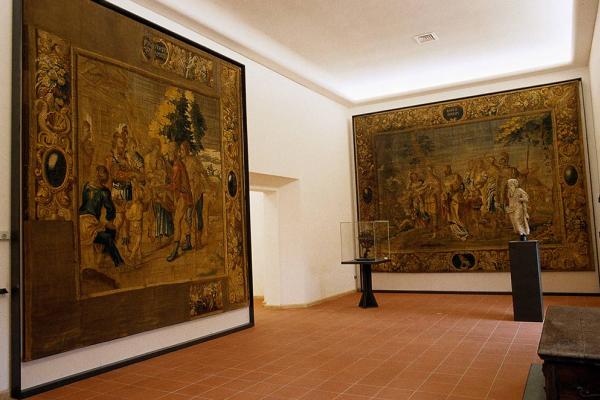
The Museo della città is divided into several sections. Among these, the one dedicated to the finds found in the Surgeon's House and the one dedicated to fourteenth-century painting, where numerous works of the Rimini school are exhibited, are worth mentioning. For all Federico Fellini's lovers, on the ground floor of the museum you can find the two original records in which the Rimini born artist, from the sixties to 1990, collected notes on topics and figures then found in his films.

Among the most significant symbols for Rimini is the Teatro Amintore Galli, which was partially destroyed by the bombing of December 28, 1943 and reopened at the end of a unique and complex restoration project in October 2018. The opening event, made up of several evenings, saw the participation of important guests such as Cecilia Bartoli and Roberto Bolle.
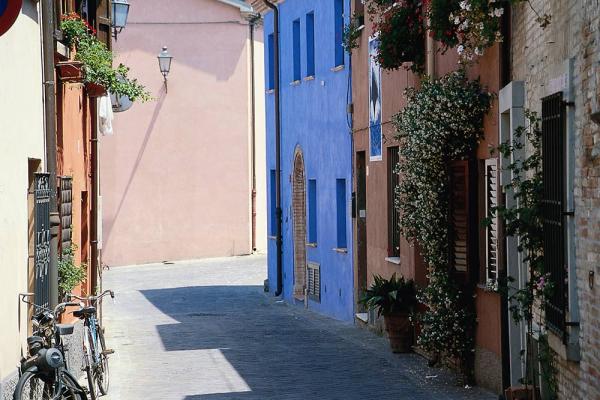
The fame of Borgo San Giuliano is mainly linked to Federico Fellini, who was born here in 1920 and whose films are full of impressions connected to this special place. However, this lovely and popular place a mere two step from Ponte Tiberio, also attracts many visitors for the romantic atmosphere it offers to couples and for the incredible charm that its streets and squares can exert upon anyone.
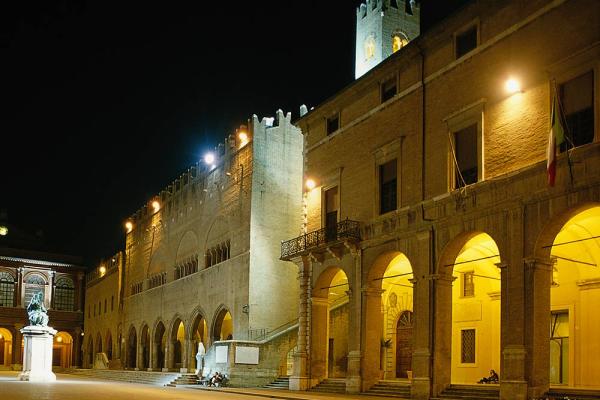
History lovers cannot go to Rimini without visiting the Palazzo dell'Arengo, located in Piazza Cavour. It is the site where the council of the city people met during the late Middle Ages. The building is defined by its Romanesque-Gothic style and houses some frescoes of the 1300s belonging to the Rimini school.

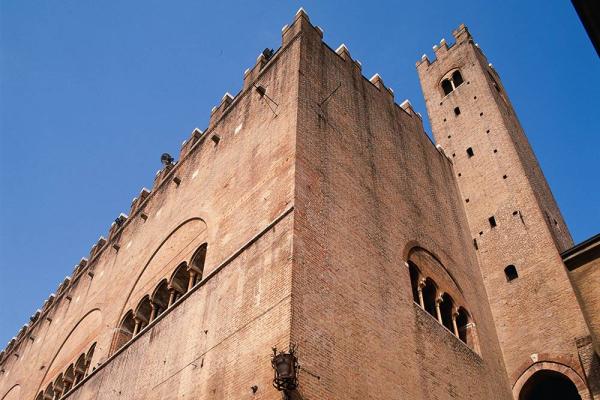
Still in Piazza Cavour, next to the Palazzo dell'Arengo, you can admire Palazzo Garampi, the town hall. Collapsed in 1672 after an earthquake and again in 1944 because of the war, the building has been restored in full respect of its original design.

A symbol of the link between the city of Rimini and the Malatesta family, Castel Sismondo owes its name to Sigismondo Pandolfo Malatesta, the creator and administrator of this project. Today only the central nucleus of the imposing structure, residence and fortress of the Lord of Rimini remains, which in addition to being designed for defensive purposes aimed to enhance the grandeur of the Malatesta feudal lordship.
Tel. +39 0541373573 - Fax +39 0541 489921
Contattaci con WhatsApp +39 3757947858
Seguici su FACEBOOK
Privacy & Cookie Policy - Cookie preferences
P.Iva 03440140402
CIR: 099014-AL-00908 - CIN: IT099014A1CCKTL59O











 Request a quote
Request a quote
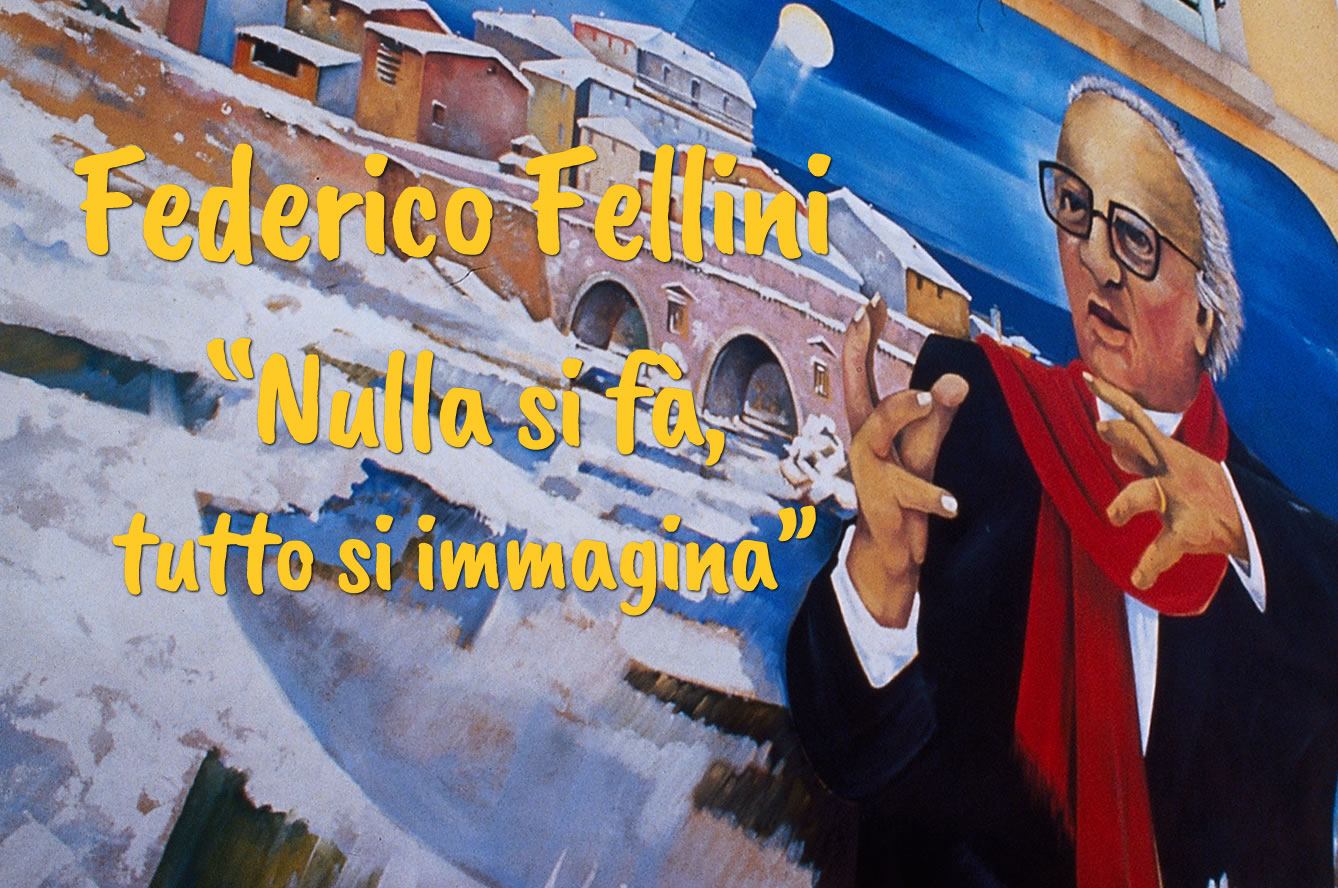











 200 sqm swimming pool with area dedicated to children and water slide
200 sqm swimming pool with area dedicated to children and water slide Animation 12 h a day on the beach and in the hotel
Animation 12 h a day on the beach and in the hotel Free Wi Fi with broadband connection (rooms and common areas)
Free Wi Fi with broadband connection (rooms and common areas) Car park
Car park Bike rental also with child seats
Bike rental also with child seats Afternoon Snack by the pool every day
Afternoon Snack by the pool every day High chairs and cots
High chairs and cots Restaurant with buffet service at flexible hours
Restaurant with buffet service at flexible hours Large play area on parquet
Large play area on parquet Relax area for adults
Relax area for adults Beach service, 1 umbrella and 2 sunbeds per room, at one of 4 beach resorts that have an agreement with the hotel
Beach service, 1 umbrella and 2 sunbeds per room, at one of 4 beach resorts that have an agreement with the hotel








 Contattaci con WhatsApp +39 3757947858
Contattaci con WhatsApp +39 3757947858  Seguici su FACEBOOK
Seguici su FACEBOOK